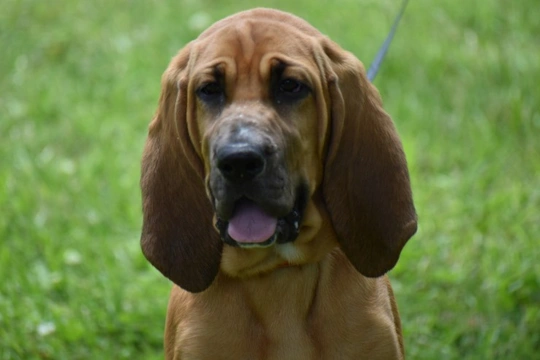
Aortic stenosis in the bloodhound dog breed
The bloodhound is a dog breed that is not very commonly seen in the UK these days, but that used to be much more common when the breed was widely used for working roles, thanks to their superior scenting abilities.
Despite the fact that bloodhounds are something of an unusual sight today, most dog lovers would probably recognise a dog of the breed if they saw one, as these are very distinctive-looking dogs with heavy jowls and long drooping ears, as well as large and soulful eyes.
When it comes to the bloodhound temperament, dogs of the breed tend to be gentle, affectionate and sensitive, as well as being a little shy around strangers until they get to know them. They also tend to be quite slobbery, prone to snoring and somewhat stubborn when trailing a scent, giving them a unique personality and temperament that many people have a real soft spot for.
Bloodhounds need quite a lot of exercise and attention, and they don’t thrive within a sedentary lifestyle or if left alone for long periods of time. This is something to bear in mind if you are considering buying a dog of the breed, and it is important to do plenty of research to ensure that a bloodhound would be the right match for you.
It is also important to look into the general health and longevity of the breed as well, and bloodhounds have a fairly short lifespan as a whole, averaging around 7-8 years. There are a number of hereditary health problems that can be found within bloodhound breed populations that help to contribute to the shorter than average lifespan of the breed across the board, and one of these is called aortic stenosis, which is a congenital heart condition.
In this article we will look at aortic stenosis in the bloodhound dog breed in more detail, covering its symptoms, causes and treatment options. Read on to learn more about aortic stenosis in the bloodhound.
What is aortic stenosis?
Aortic stenosis is a congenital heart condition that is the second most prevalent hereditary heart problem that can be found in dogs as a whole, and which is particularly common in dogs of the bloodhound breed.
Aortic stenosis affects the heart’s aortic valve, which is the valve that is responsible for controlling blood flow through the heart from the left ventricle to the outflow tract of the aorta. Aortic stenosis occurs when the aortic valve is narrower than it should be, which places the heart under additional pressure when pumping blood. This in turn leads to the cells of the heart itself becoming larger in order to keep the blood flowing, and over time, this causes a thickening of the wall of the heart itself.
What causes aortic stenosis in bloodhounds?
Aortic stenosis comes in three forms, being valvular, sub-valvular and supra-valvular respectively. We don’t know exactly why the bloodhound breed first began to develop more than its fair share of presentations of the condition, but it is a hereditary heart defect that is present from birth, and so, is inherited from the parent dogs and passed onto their own young.
What are the symptoms of aortic stenosis?
Because aortic stenosis is a hereditary disorder, it is present from birth and usually becomes apparent in affected dogs during their first few weeks or months of life. However, it may not present with symptoms for the first time until the dog is older, depending on how serious the narrowing of the aorta is.
The symptoms of aortic stenosis in the bloodhound can be varied in terms of their presentation and severity, but all are serious and warrant an immediate trip to the vet.
Some of the most common symptoms of aortic stenosis in the bloodhound include:
- Breathing difficulties or laboured breathing.
- Faster than normal breathing even when at rest.
- Fainting or bouts of losing consciousness.
- Unusual lung and heart sounds.
- Congestive heart failure may occur in acute cases too.
Can bloodhound aortic stenosis be treated or cured?
Aortic stenosis is a complex disorder to treat, and whilst surgical options are available and your vet may consider referring your dog to a specialist who can carry out a corrective surgery to repair the valve, the success rate of this surgery can be very variable and it is rarely the most appropriate option as the mortality rate after surgery is high.
Other options include catheterising to widen the heart’s narrowed valve, although this is usually only performed on dogs with a mild form of the condition as it tends to be ineffective in more acute presentations.
Often, supportive therapies and treatments are the best approach for affected dogs, such as antibiotic therapy as aortic stenosis increases the chances of the dog developing a bacterial infection of the heart.
At home, you may need to change the ways in which you care for and manage your dog, keeping exercise low-impact and low stress, and feeding a low-sodium diet that your vet will recommend to avoid further thickening and damage to the heart.
Because aortic stenosis in the bloodhound is hereditary, affected dogs should not be used for breeding.



